Get the weekly SPARTANAT newsletter.
Your bonus: the free E-Book from SPARTANAT.
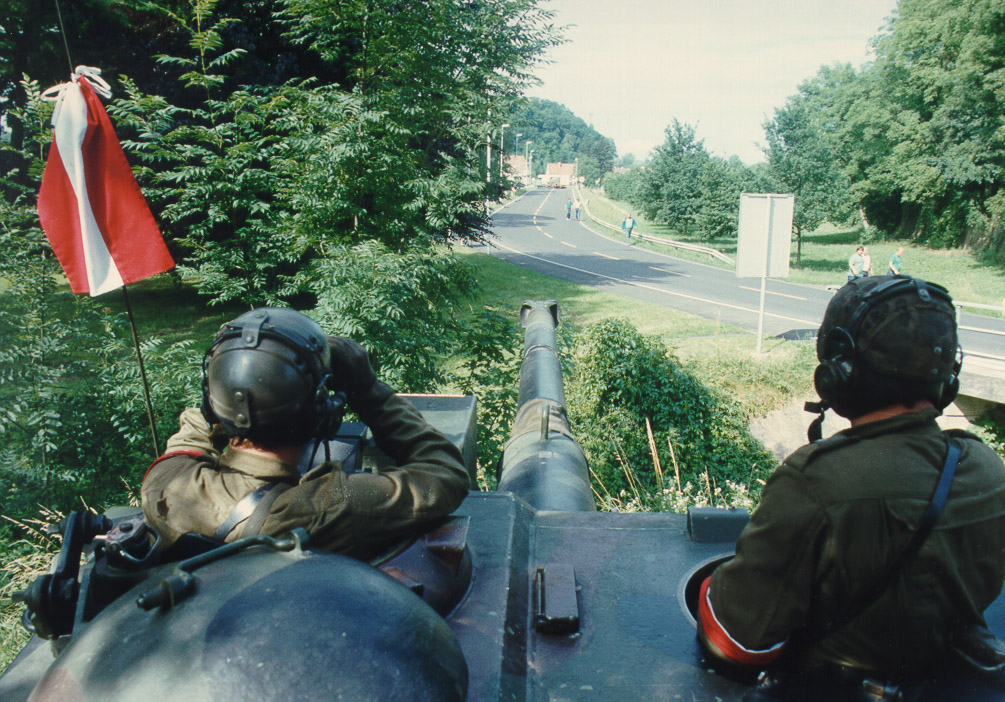
PHOTO FILE: 1991 - the Federal Army in action
In 1991, Europe underwent profound changes with the collapse of the Soviet Union and the breakup of Yugoslavia. This text explores how the Austrian Armed Forces responded to the escalating conflict in Yugoslavia in June 1991, securing borders with tanks, infantry, and live ammunition.
The year 1991 was a very formative one for Europe and the map had to be redrawn several times. By the end of 1991, the Soviet Union collapsed and the Cold War ended. However, prior to that, the breakup of Yugoslavia was also occurring. This began in February 1991 and escalated into a ten-year civil war, the tensions of which are still not entirely resolved.
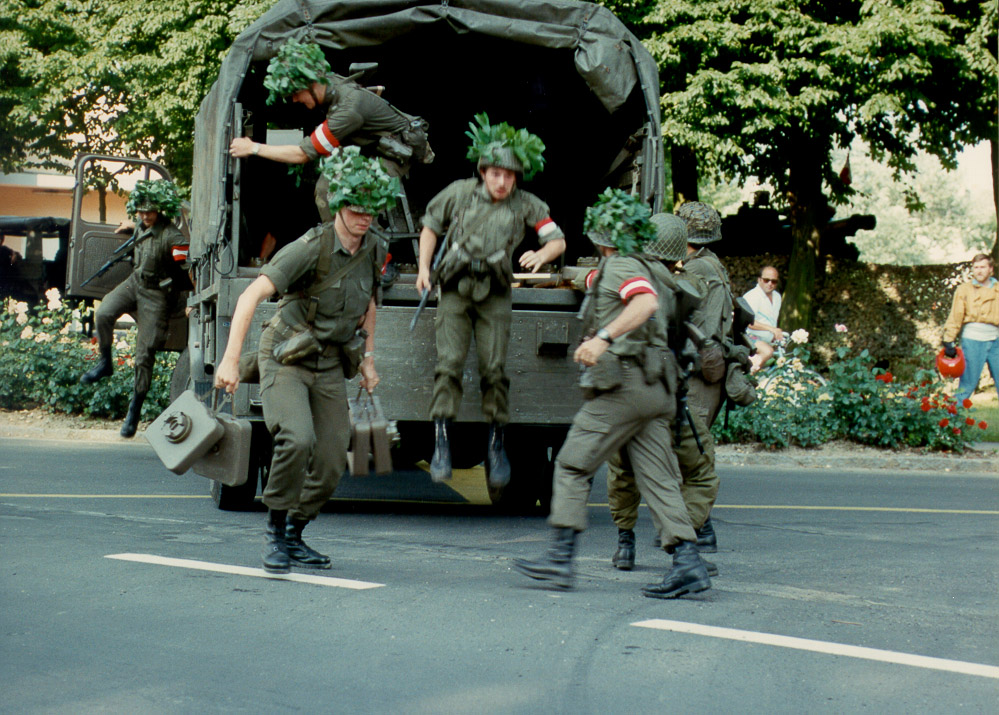
In June 1991, this conflict also posed a difficult test for the Austrian Armed Forces. After the declarations of independence by Croatia and Slovenia, the Yugoslav People's Army attempted to take control of the Slovenian border crossings to Austria. By the end of June 1991, the fighting with the Slovenian Territorial Defence reached directly to the border. The Armed Forces were equipped with live ammunition and began securing the borders. A new experience for neutral Austria.
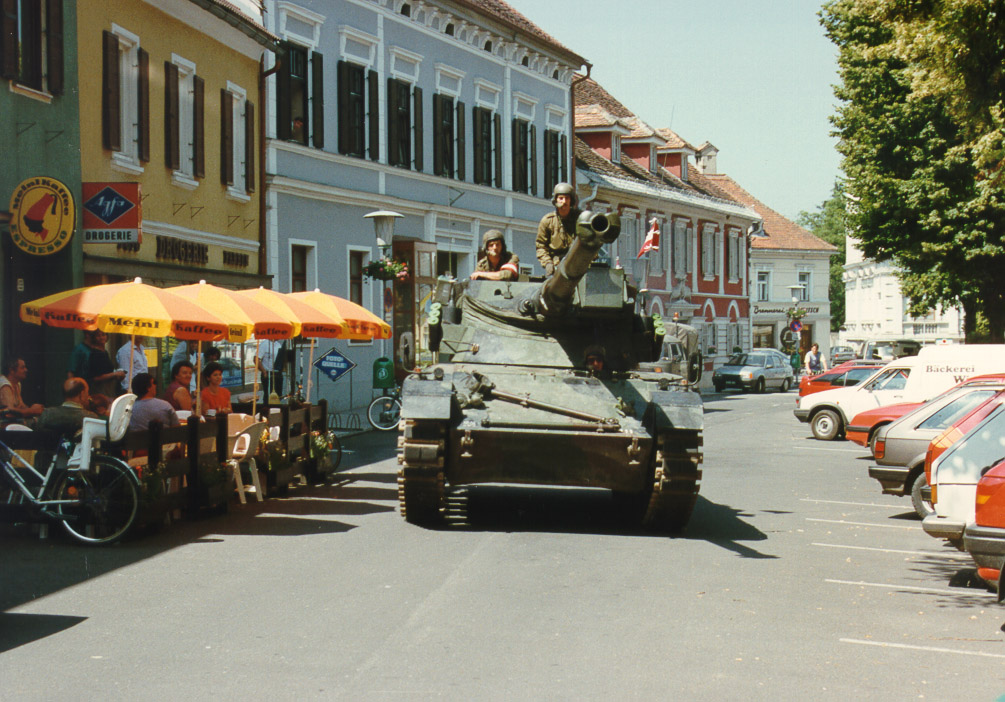
An unusual sight in the Styrian town of Bad Radkersburg and other border cities: tanks rolling in Austria towards the border. In the image, a Kürassier tank destroyer.
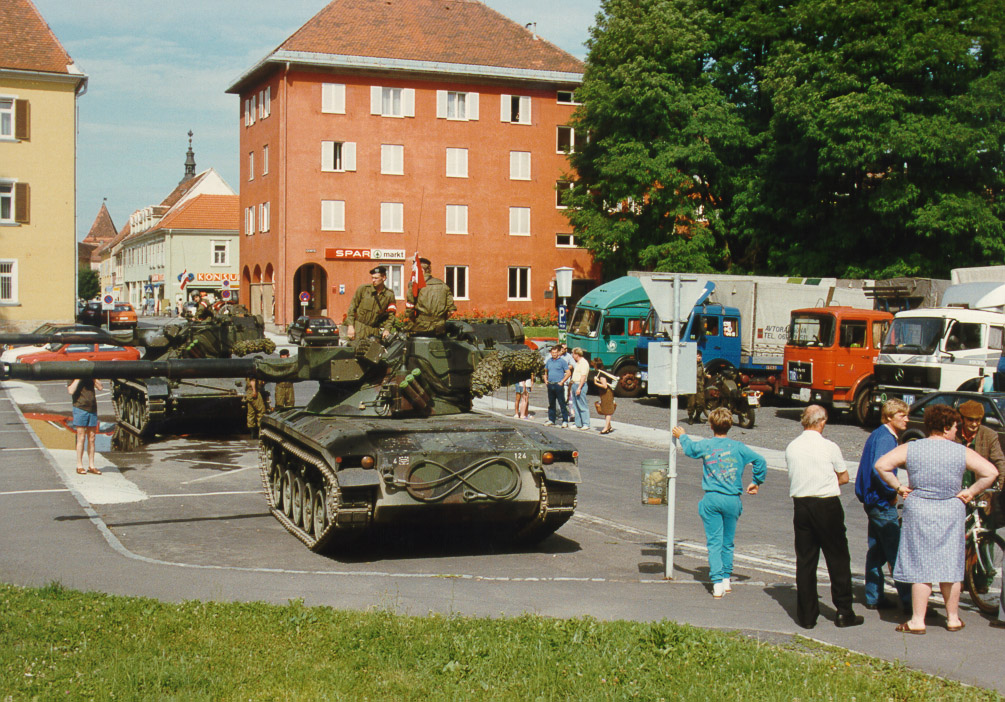
Tanks in position - in the middle of the town, a very rare scene in Austria. Of course, the population is curious and comes to see the tanks.
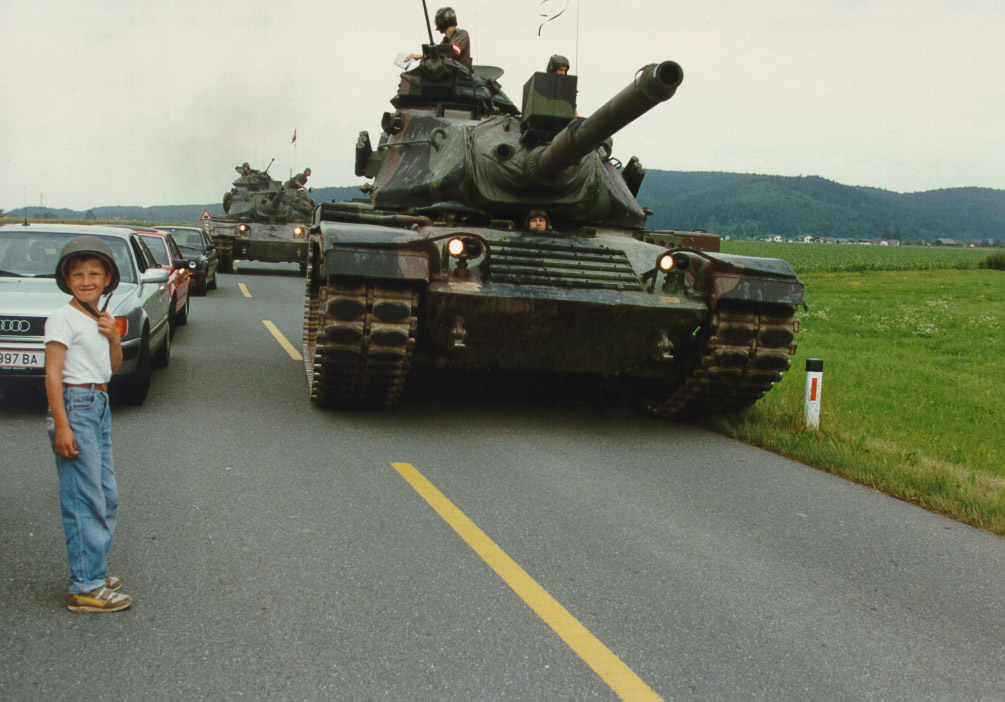
Later, the M60 battle tanks also arrived. In 1991, the Austrian Armed Forces did not yet have the Leopard 2 tanks, which were only procured in 1996.
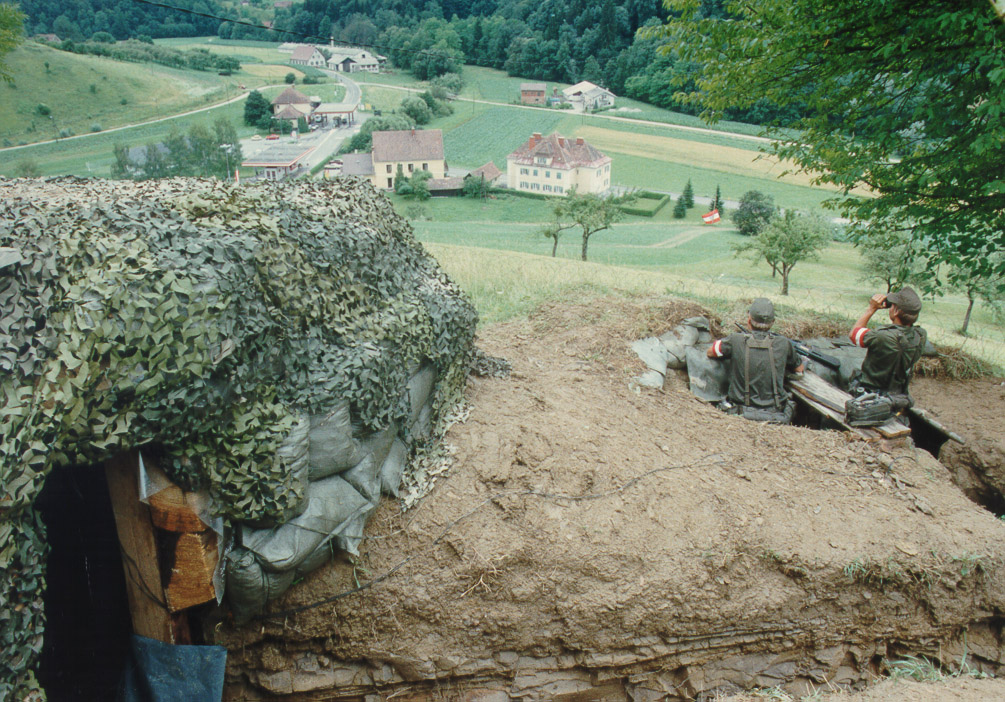
Tanks alone do not secure an area, so infantry is necessary. What do they do? They dig in, of course. The entire border was equipped with numerous positions. In the view towards the border crossing to Yugoslavia/Slovenia.
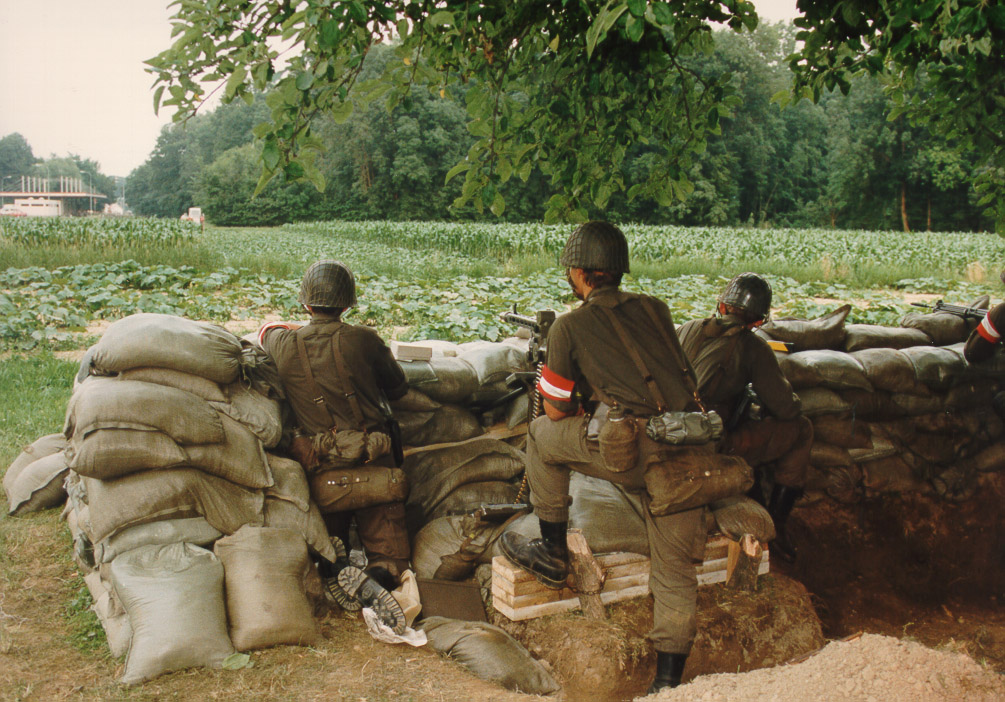
A machine gun position, as it should be, with a border building in the background. Some border crossings between the Slovenian Territorial Defence (TO) and the Yugoslav People's Army (JNA) were fiercely contested.
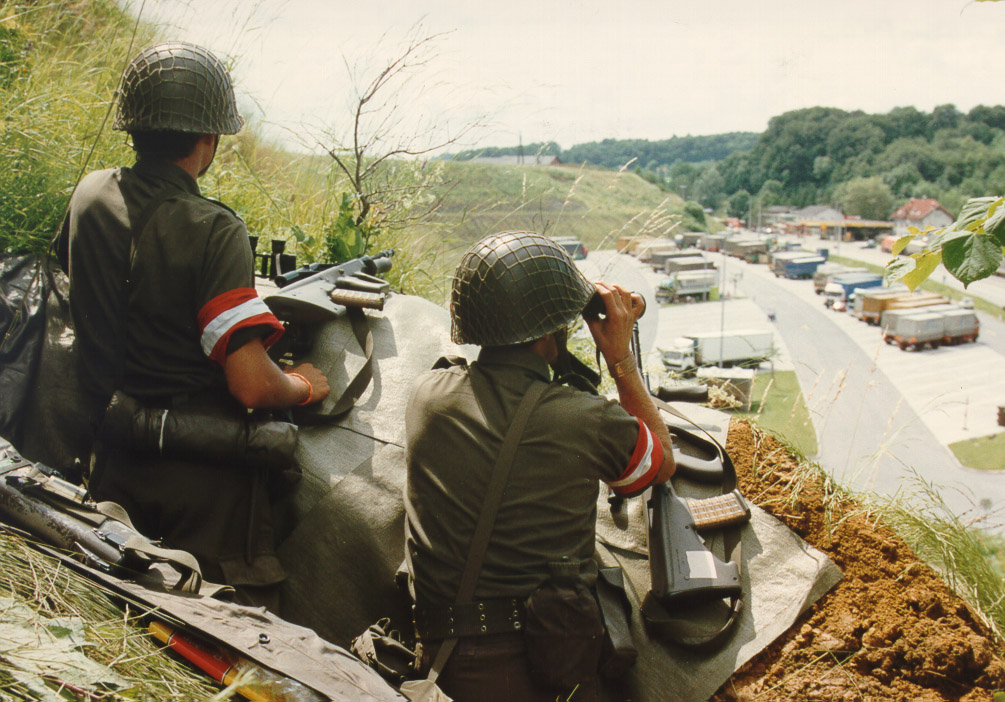
Observation posts are also necessary for border security. "Looking and Gucking," the main task of the standing reconnaissance team.
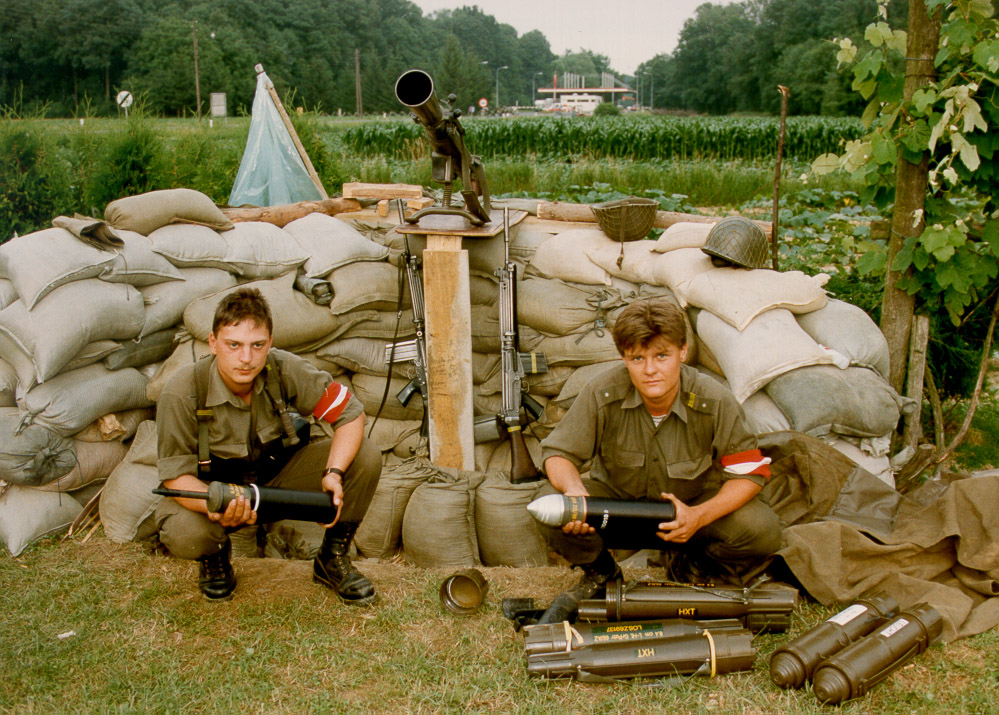
Carl Gustav should not be missing either. In the Austrian Armed Forces, it is called Carl PAR 66/79 (Anti-Tank Tube). All positions were equipped with live ammunition. Surely a very strange feeling for the soldiers at that time. Also, the Stg 77/Steyr AUG was not yet widely distributed, as the Stg 58/FN FAL in the image shows.
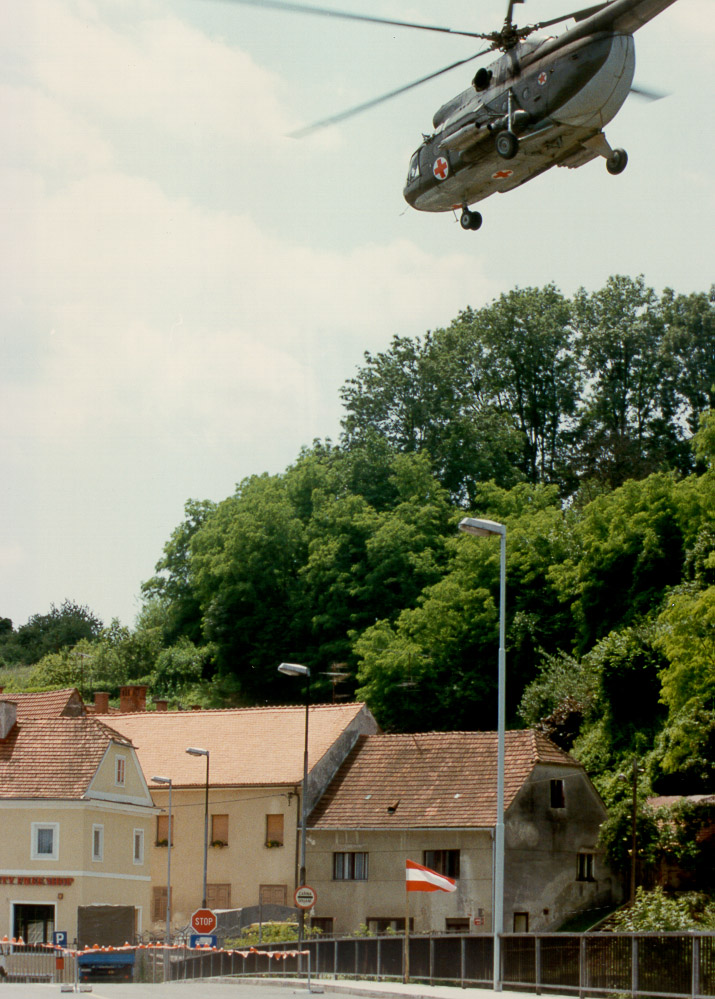
Overall, nothing happened, but there were a few close calls. One was when a Mil MI-8 helicopter from the Yugoslav Army flew directly over the border. The navigation error was quickly recognized and it promptly returned towards future Slovenia.
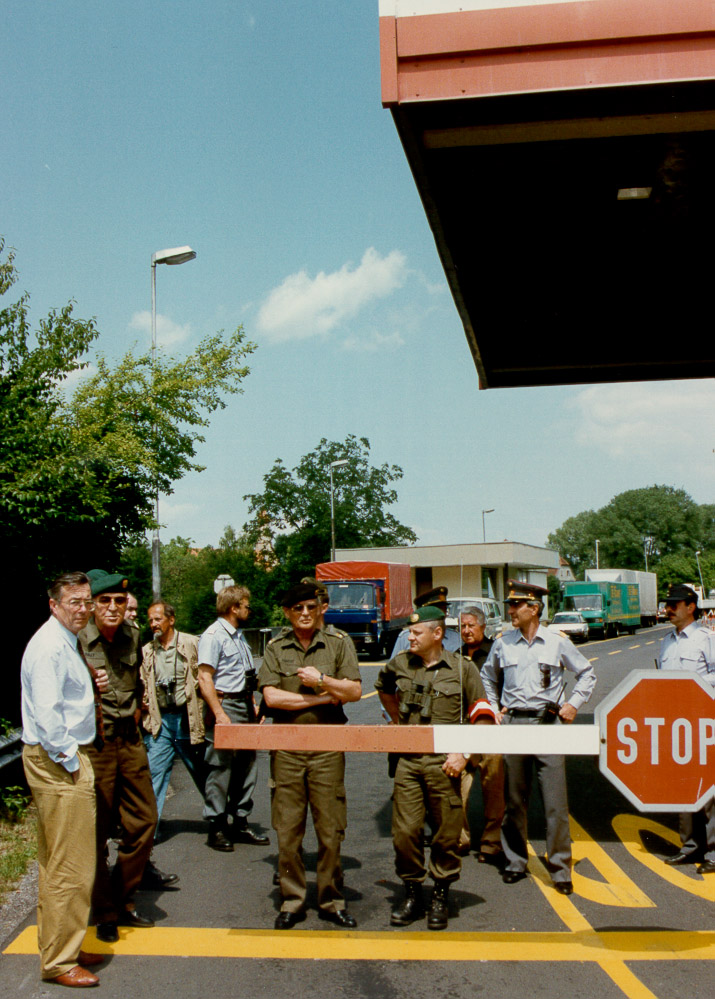
At that time a novelty, now legally regulated: the cooperation in the case of operations between law enforcement and the military. In 1991, new ground was broken here.
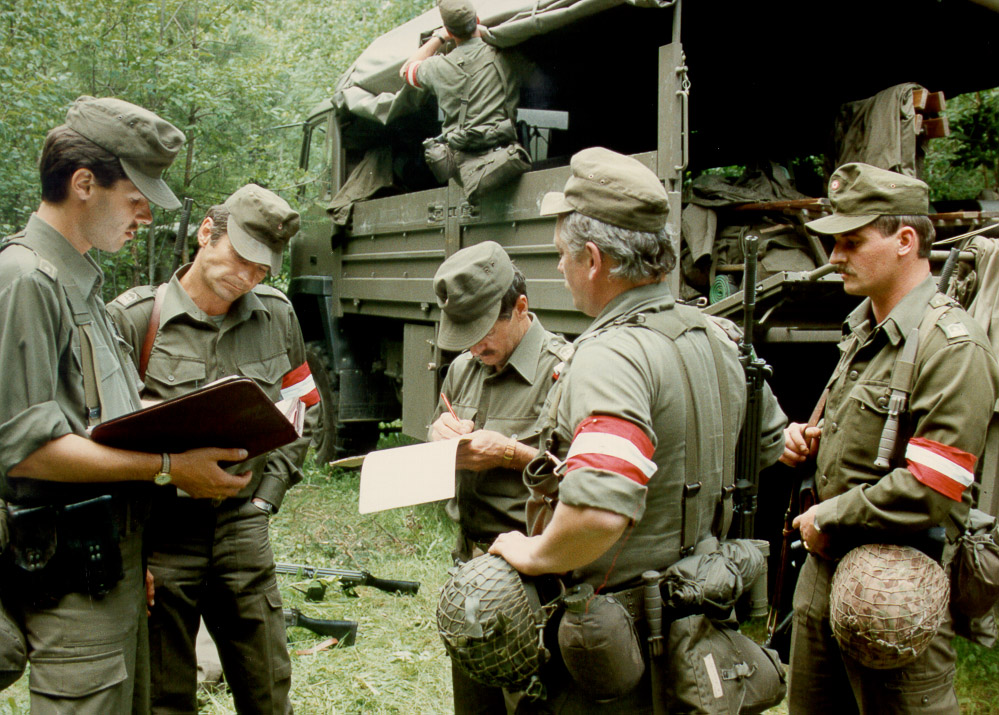
Issuing commands was on the agenda, as is usual in operations.
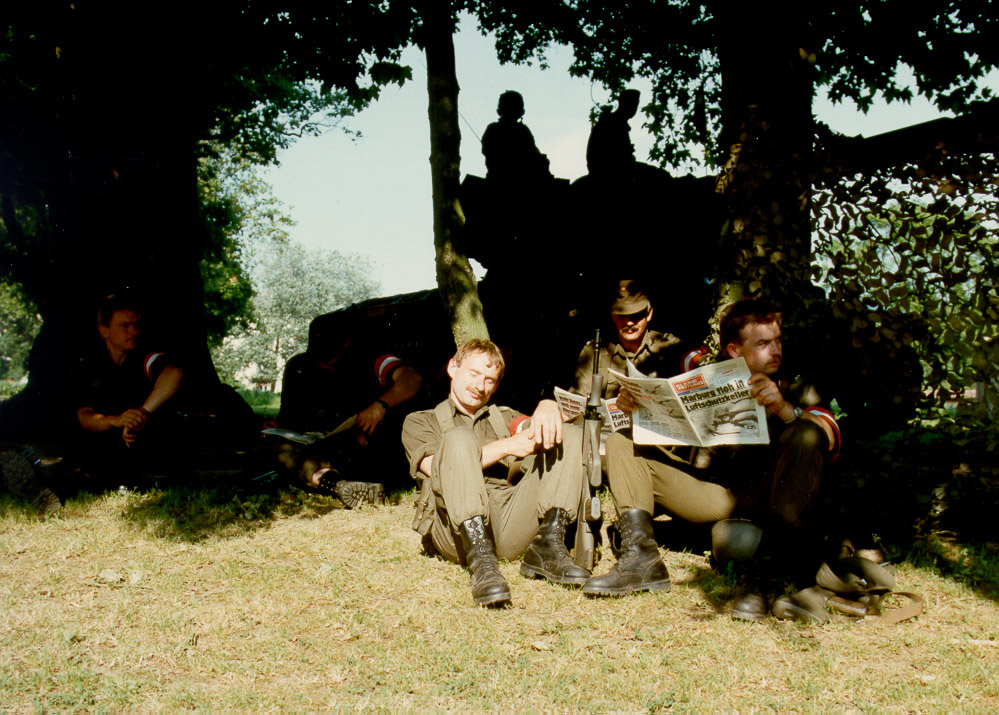
"Most of his life, a soldier waits in vain. The remaining time he keeps himself ready." Military everyday life in the summer of 1991. The war stayed in the neighboring country thanks to the secured border.
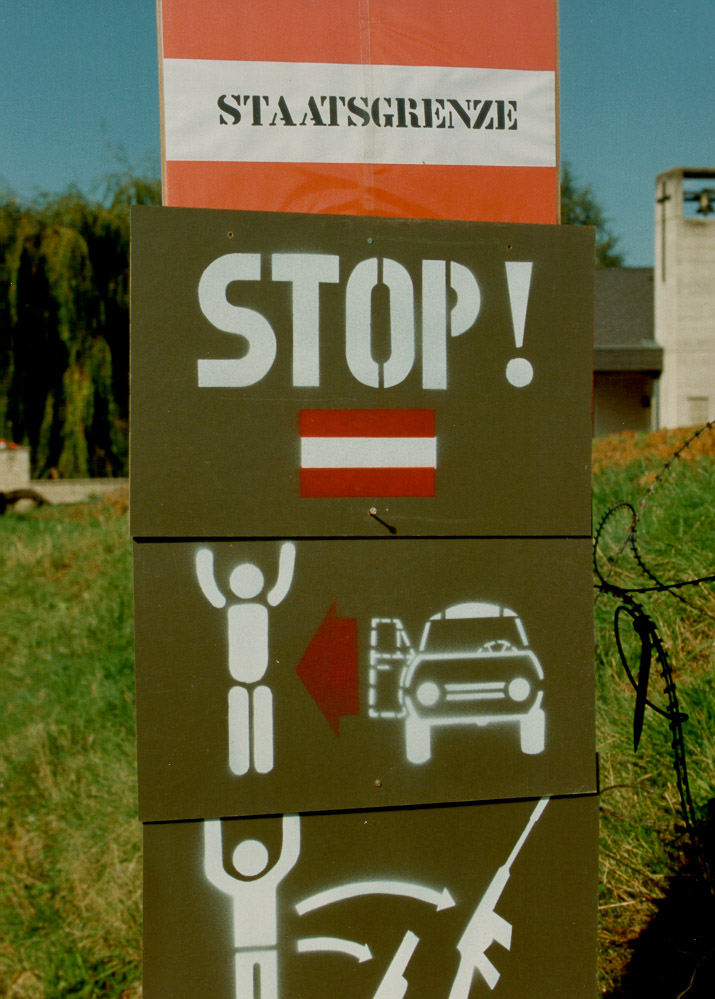
Pictograms are understandable to everyone: "Please come to Austria without weapons."
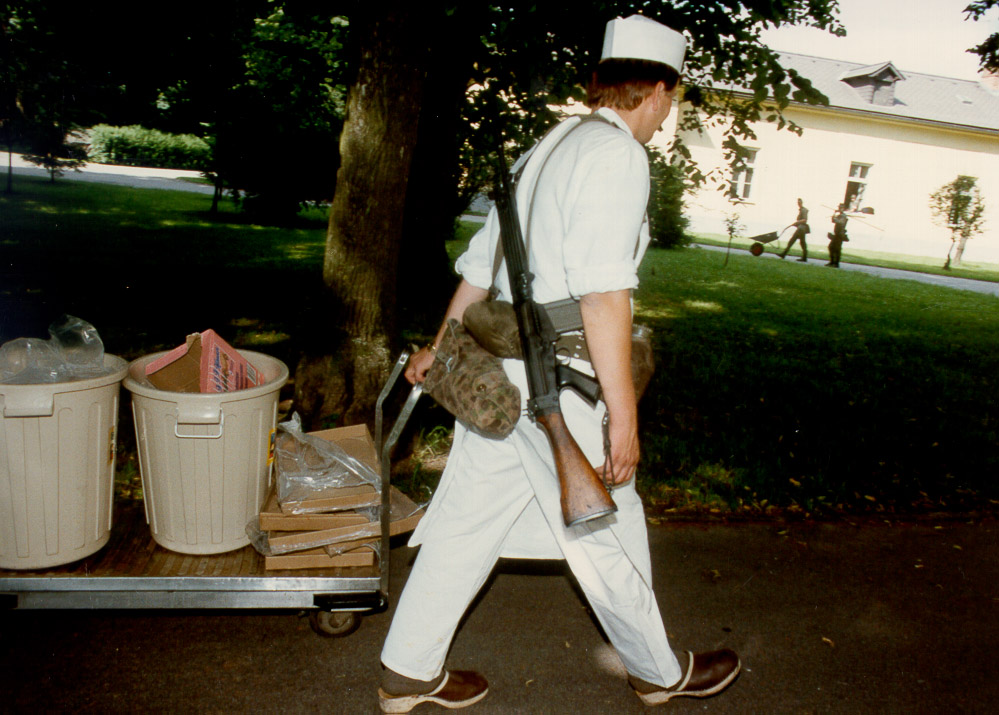
You know it's serious when even the cooks are armed. That's what we call combat-ready supply.
AUSTRIAN ARMY on the Internet: www.bundesheer.at
SPARTANAT is the online magazine for Military News, Tactical Life, Gear & Reviews.
Send us your news: [email protected]
Ad
similar
Get the weekly SPARTANAT newsletter.
Your bonus: the free E-Book from SPARTANAT.


